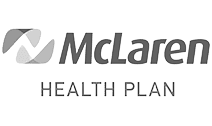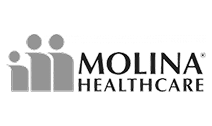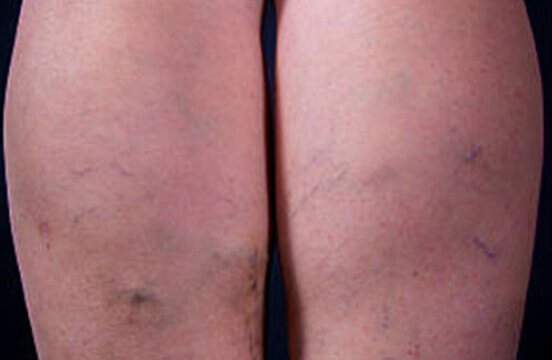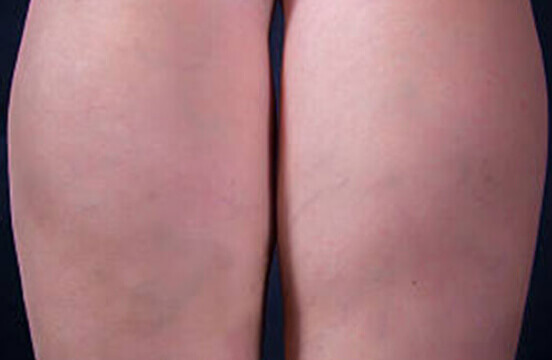What Is Chronic Venous Insufficiency?
Chronic Venous Insufficiency (CVI) is a medical condition that occurs when the valves in the veins that carry blood back to the heart become damaged or weakened. CVI can result in blood flowing back into the lower legs, causing them to become swollen, painful, and discolored.
It can occur due to any damage in your leg veins, including:
- Deep Veins: Large veins that are deep in your body and run through the muscle
- Superficial Veins: Veins that are close to your skin’s surface
- Perforating Veins: These connect your deep and superficial veins
How Does CVI Affect the Body?
CVI affects the body by causing blood to pool in the veins of the legs. This results in increased pressure in the veins, causing them to become enlarged and weakened. Over time, this can lead to the development of varicose veins, skin changes, and leg ulcers.
When left untreated, CVI raises the pressure in your leg veins so much that your capillaries (tiny blood vessels) can burst. Burst capillaries can lead to:
- Tissue damage
- Tissue inflammation in that specific area
- Venous stasis ulcers (open sores on the skin’s surface)
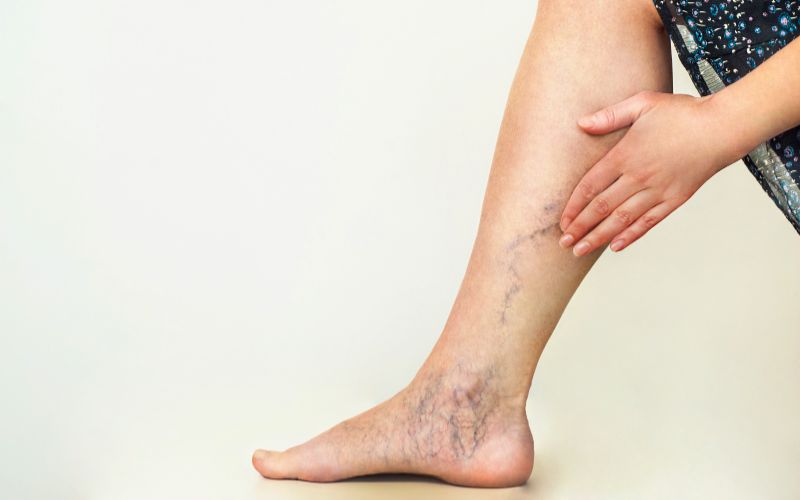
Signs and Symptoms of Chronic Venous Insufficiency
The signs and symptoms of chronic venous insufficiency may vary depending on the severity of the condition. Common signs and symptoms include:
- Swelling in the legs and ankles
- Pain or discomfort in the legs
- Fatigue or heaviness in the legs
- Skin changes, such as thickening, discoloration, or inflammation
- Itching or burning sensation in the legs
- Varicose veins
- Leg cramps at night
- Ulcers (open sores) near the ankles
- Flaking or itching skin
If you’re experiencing any of the signs and symptoms above, call our Michigan vein specialist to schedule a consultation.
Chronic Venous Insufficiency Stages
Chronic venous insufficiency can progress through several stages, with each stage indicating a more severe form of the condition. The stages are as follows:
- Stage 1: The development of spider veins
- Stage 2: Varicose vein symptoms, such as leg heaviness, swelling, itching, and burning
- Stage 3: Leg swelling
- Stage 4: Skin changes, such as to the skin color and/or texture
- Stage 5: Venous ulcers
CVI is diagnosed at stage three or above. Having spider veins or varicose veins doesn’t mean you have CVI. However, seeking treatment for both those vein conditions will prevent complications in the future.
CVI Causes
Several factors can contribute to the development of chronic venous insufficiency. Some of the most common causes include:
Age: As you age, your risk of developing venous issues increases.
Genetics: Vein diseases tend to run in families. If your parent or close relative deals with venous issues, you’re more likely to develop them.
Pregnancy: Vein disease often develops during pregnancy as there’s an increase in blood flow and an influx of hormones.
Prolonged Sitting or Standing: Those who spent prolonged periods standing or sitting are at a higher risk of developing CVI.
Excess Weight: Being overweight or obese places additional strain on the veins and can cause damage, leading to CVI.
Smoking: Those who smoke are at a higher risk of developing venous issues as it can weaken the veins and reduce blood flow.
How Chronic Venous Insufficiency Is Diagnosed
Diagnosing chronic venous insufficiency typically involves a physical exam and imaging tests. Dr. Zmily, a board-certified cardiologist, will begin with a physical exam. He’ll look for signs of CVI, such as swelling, varicose veins, and skin changes.
Our vein doctor may also perform a vascular ultrasound. It’s a painless imaging test that uses sound waves to create pictures of the veins. It’ll show us the part of the veins that are damaged.
CVI Treatments
Treatment options for chronic venous insufficiency will depend on the severity of the condition. Treatments include:
- Compression stockings: These stockings help improve blood flow and reduce swelling in the legs.
- Lifestyle changes: Making changes to your diet, exercise routine, and sitting habits can help reduce CVI symptoms.
- Medications: Certain medications, such as diuretics or anticoagulants, may be prescribed.
- Minimally invasive procedures: Procedures, such as endovenous laser treatment or radiofrequency ablation, can treat damaged veins and improve blood flow. These aren’t typically recommended until all other treatments have been exhausted.
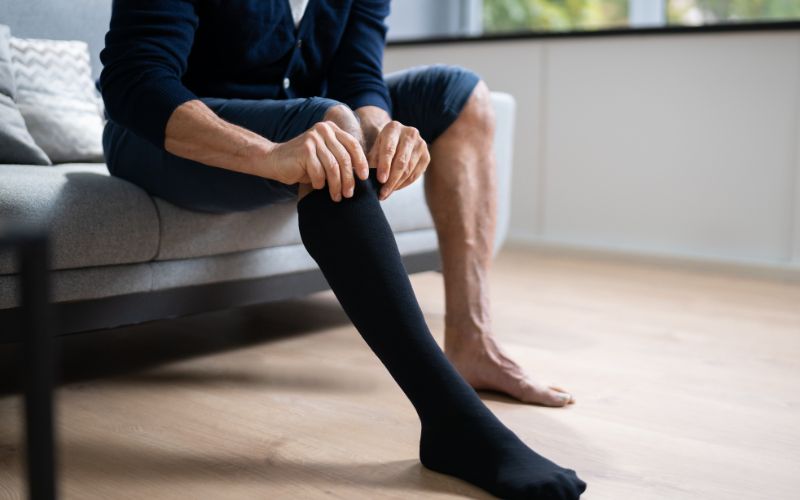
Frequently Asked Questions
While there’s no guaranteed way to prevent chronic venous insufficiency, there are some steps you can take to reduce your risk of developing the vein condition. These steps include:
- Maintaining a healthy weight
- Staying active
- Avoiding prolonged periods of sitting and standing
- Wearing compression stockings
- Avoid smoking or tobacco use
Risk factors for chronic venous insufficiency include:
- History of deep vein thrombosis
- Obesity
- Varicose veins
- Genetics
- Pregnancy
- Smoking and tobacco use
- Sitting or standing for long periods
- Sleeping in a chair or recliner
- Being over the age of 50
While not life-threatening, if left untreated, chronic venous insufficiency can lead to uncomfortable symptoms and other health issues. CVI can lead to more severe stages and cause skin changes, ulcers, and other complications that can impact your life quality.
While chronic venous insufficiency is more common in older adults, it can affect people of any age. Certain factors such as a family history of vein conditions, obesity, and a sedentary lifestyle may increase the risk of developing CVI at a younger age.
Visit Suburban Vein Center for Vein Treatments
Suburban Vein Center provides quality vein care to ensure you remain healthy. Dr. Zmily will work with you to ensure you get the right diagnosis and the most effective treatment. If you have concerns about any vein conditions you may be dealing with, call one of our four Michigan practices today. Schedule your consultation today by calling (248) 480-0368.
With offices located in Troy, Taylor, Rochester, and Detroit, we’re here to get you the care you need.











